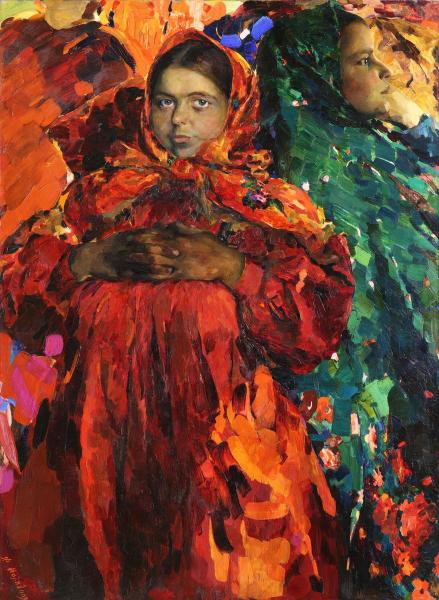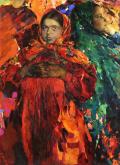Two Wenches
1910s
A student of the Imperial Academy of Arts at the end of the nineteenth century, Philipp Malyavin introduced a new type of peasant woman into Russian art ‒ a stately, proud and sometimes intrepidly independent woman. His models were the inhabitants of the villages of Ryazan Province, dressed in bright festive attire. The painting is a sublime and romantic image of Russian womenfolk, with their wholesome characters and inner stature. The faces of the girls are meaningful, the looks in their eyes are intent and enigmatic, the colours of their attire glimmer in a bewitching manner. The expressive images are intensified by the artist’s inspired and temperamental painting.
Kerchiefs, headscarves and shawls are an important part of costume for girls and women. The Slavs adopted the tradition of covering the head with cloth or linen in ancient times. “Exposing the hair”, that is letting the ends of the hair show (that is to say nothing of appearing in public with an uncovered head), was the most shameful thing a married woman could do. The usual Slavic headdress of a towel or head scarf, recognizable in frescoes and miniature paintings in books from the 11th century, have long remained a part of female costume. Over time, homespun headscarves were replaced by manufactured textiles. Mill-finished headscarves and shawls were used in peasant circles as a complement to headdress or individual decorations such as every day or festive attire.
Every woman, regardless of her class or income, kept several headscarves in her trunk for any life event. In the latter half of the 19th century and early 20th century, these beautiful examples of the Russian textile trade became an integral part of folk costume. Colorful peasant and merchant garments, embellished with bright headscarves and shawls, were painted on the canvases of Malyavin, Ryabushkin, Kustodiev, Nesterov and other artists.

